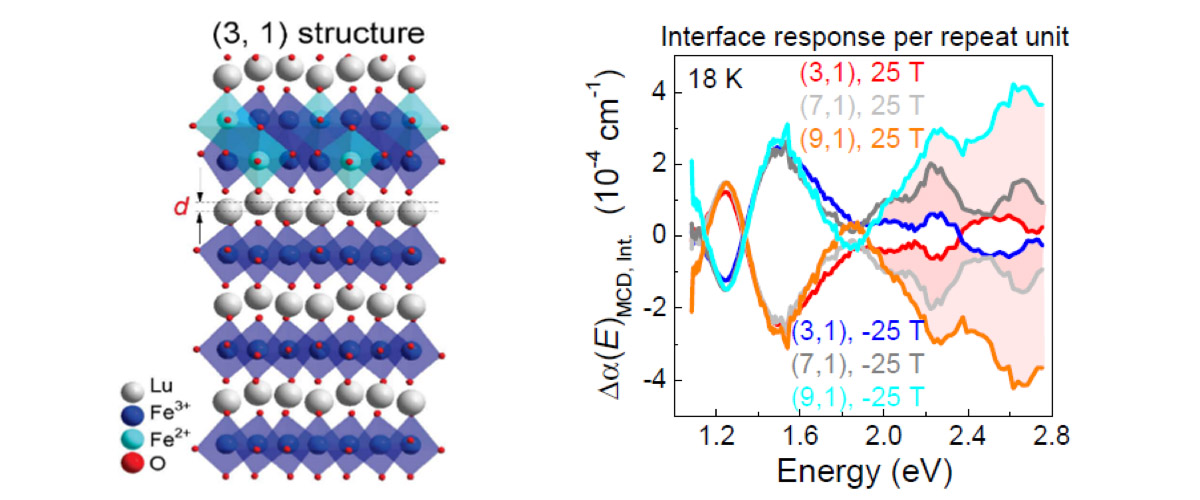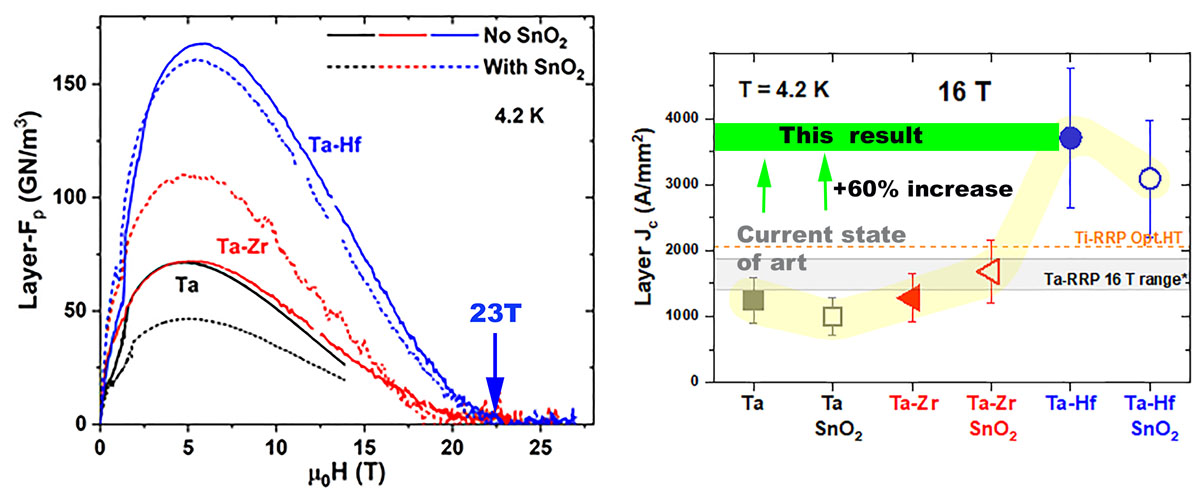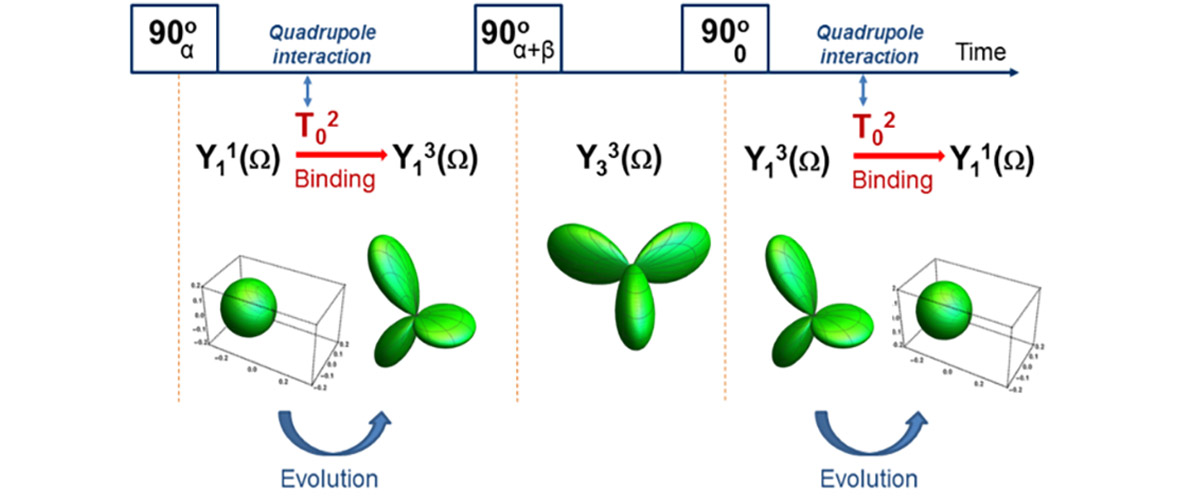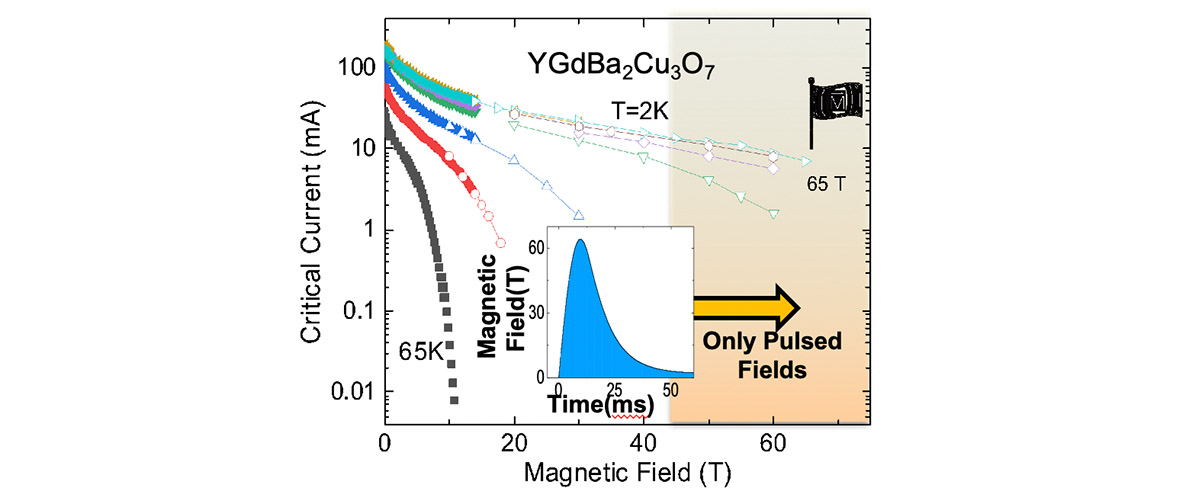What did scientists discover?
MagLab users developed a method for extracting interface optical spectra and magnetization in multiferroic superlattices. They employed these techniques to a room-temperature multiferroic superlattice made of layers of LuFeO3 and LuFe2O4 revealing the mechanism for enhanced magnetization and high Curie temperature (above room temperature) in this system.
Why is this important?
Understanding the inner workings of multiferroic interface materials is in its infancy. This spectroscopic decomposition method is a powerful means to learn about how superlattices function via site-specific information gathered directly at the functional interfaces. Opportunities exist to exploit interface materials to advance spintronics and photonics devices. As such, there is broad utility for techniques that reveal interface dynamics that reaches well beyond research into the behavior of multiferroics.
Who did the research?
S. Fan1, H. Das2, A. Rébola3, K. Smith4, J. Mundy5 , C. Brooks5, M. Holtz6, D. Muller6, C. Fennie6, R. Ramesh7, D. Schlom6, S. McGill8, and J. Musfeldt1,4
1University of Tennessee, Physics; 2Tokyo Institute of Technology; 3Instituto de Física Rosario-CONICET; 4University of Tennessee, Chemistry; 5Harvard University, Physics; 6Cornell University; 7University of California, Berkeley; 8National MagLab
Why did they need the MagLab?
The MagLab's unique 25T split helix magnet was crucial because it provides direct optical access to the sample in magnetic field. The high coercivity of these superlattices also requires a large ±25 T field to close the hysteresis loop (see Fig c).
Details for scientists
- View or download the expert-level Science Highlight, Site-specific Spectroscopic Measurement of Spin and Charge in (LuFeO3)m/(LuFe2O4)1 Multiferroic Superlattices
- Read the full-length publication, Site-specific spectroscopic measurement of spin and charge in (LuFeO3)m/(LuFe2O4)1 multiferroic superlattices, in Nature Communications
Funding
This research was funded by the following grants: J. L. Musfeldt (DOE, DE-FG02-45201ER45885), G.S. Boebinger (NSF DMR-1157490, NSF DMR-1644779), S. McGill (NSF, DMR-1644779, DMR-122921), D. Schlom (DOE, DE-SC0002334), D. Muller (NSF, DMR-1719875), H. Das (JSPS, 19K05246 ), and A. Rébola, C. Fennie (NSF, DMR-1539918)
For more information, contact Tim Murphy.






